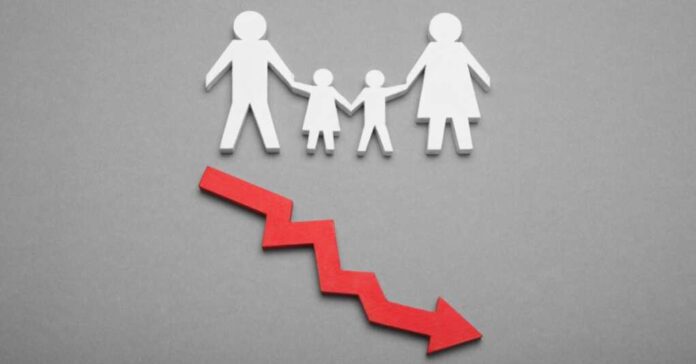You might have seen in the news recently that South Korea has declared a national emergency concerning its abysmally low birth rate. And while South Korea should indeed be worried about the number of children not being born every year, they aren’t the only nation seeing a similar pattern.
In fact, according to the World Economic Forum, the number of children being born worldwide has pretty much been cut in half over the last 50 years.
In 1952, the average family globally had five children. Now, they have less than three.
As you likely know, birth rates, like many other measurements, are taken per capita or 1,000 people. So, the birth rate is the total number of births in a year per 1,000 individuals.
Similarly, but different is the fertility rate of an area, which is the number of births per 1,000 women of reproductive age in an area.
As Britannica notes, any given area needs to maintain a fertility rate of at least 2.1 to sustain its population. Anything lower and a nation will begin population decline.
And currently, most countries are well below that.
South Korea, as mentioned earlier, is the lowest, coming in at a fertility rate of 0.72 in 2023. That means that most women in the country don’t even have one child, let alone the needed two.
🇰🇷 South Korea birth rate
2023: 0.72
2022: 0.78
2020: 0.84
2017: 1.05
2010: 1.23
2000: 1.48Note: the rate of 2.1 per woman needed for a steady population
— World of Statistics (@stats_feed) February 29, 2024
Japan has a slightly higher fertility rate, at 1.23.
But again, this is lower than the 2.1 needed to sustain populations.
Nations in the Middle East are seeing the same issues. In the 1950s, it was nothing to see women raising seven children on average. Now, the fertility rate is only 1.8.
In the Western world, things are just as bad.
Across the European Union, fertility rates sit at just 1.46 live births per woman. In nations like Malta, the rate is lower at 1.08 up to 1.79 in France.
And the United States is no exception.
According to the Centers for Disease Control and Prevention, the average American woman has 1.62 children.
Now, to be sure, not all countries are on the verge of population decline, at least not as badly as most. But thanks to the overall decline worldwide, the average sits at just around the 2.1 needed to maintain the world’s population, according to the WEF.
If we continue at this pace, it won’t be long before there will be much fewer mouths to feed and nations on the verge of total collapse.
But to fix it, we first have to figure out what is happening.
As you can imagine, there are multiple factors at play.
One is the education of women. Historically, a male’s education was prioritized over a woman’s, with some countries just now beginning to formally educate their female residents.
Take Iran, for instance. As I mentioned above, the average fertility rate in the Middle Eastern nation was seven children per woman. But those were also the days when they had an average of only three years of schooling.
By 2010, the average Iranian woman was schooled for nine years, and the fertility rate dropped to 1.8.
Niger, a country known for its lack of education, only proves this further. In 2010, most women were only educated for about 1.3 years. And so, the fertility rate was much higher than most countries, with seven per woman.
Now, by no means am I suggesting that women shouldn’t be educated. However, the more education a woman has, they tend to have less of a desire to raise or start a family. Instead, they are more career-focused. It’s just a fact.
Similarly, is the fact that the overall population is living longer. This is making women more likely to have children, if they have any, at a later age than previously, which, unfortunately, doesn’t always work out so well.
Another major factor is that abortion has become more widespread and popular.
The Guttmacher Institute reported that in 2023, the number of abortions in the US had reached an all-time high of 1,037,000. And that’s despite the Supreme Court ruling that has allowed the practice to be all but extinguished in several states.
Then, there is the growing LGBTQ+ movement.
Naturally, reproduction only happens between male and female partners. Any other combination simply doesn’t work. So, there are a growing number of couples who can’t have kids.
What all this means is that there will come a time, and very soon, for some countries, when we will be in decline. Sure, it might mean there’s an excess for a bit. But it won’t last long when there also aren’t enough individuals to keep anything running, including the country itself.



















